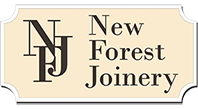Across the UK, timber is a popular material that is commonly used within building construction and bespoke joinery due to its dependable durability. Whilst it has proven over centuries that it can remain robust and reliable throughout varied climates, there are still risks of timber picking up forms of damage when left exposed to the elements for a prolonged period – but fear not! As experts in all things wooden, we have three top tips on the actions you can carry out to preserve your timber, ensuring it lasts a lifetime.
To prevent your wood from becoming vulnerable to damage and extend its lifespan, take a note of the following three approaches.
Keep your timber dry
A vast amount of timber damage stems from damp, so it is important that you do all that you can to keep your wood dry. A large portion of timber required for construction is air or kiln-dried, making it suitable for use at that time, but there is always the possibility that it can adapt to the moisture content within its environment as time goes by. However, timber used internally will rarely be faced with a level higher than 20%, and this should be low enough to keep it safe from harm.
Utilise wood preservatives
Whilst we know that timber is better suited to a location where it can remain dry, this is not always possible. For timber utilised externally in locations such as orangeries and wooden front doors, extra methods of protection will be required. Preservatives, such as coatings of varnish, can seal the surface, allowing it to repel any damaging moisture or liquid before it works its way into the timber.
Source a robust timber
When it comes to sourcing timber for your home joinery or construction project, the choice you make initially could benefit you in the long run. A professional joiner will be able to advise you on the best suited timber material for your project, preventing you from choosing a wood that will rot or fade over time, as well as advising you on the aftercare approach you should take to ensure it always looks and acts at its best.
The common forms of timber decay
Depending on the location of where the timber has been used, there are varied forms of damage that could be picked up by the material if not cared for in the necessary ways. These include:
Marine borer – A form of damage commonly found on timber utilised near to locations of water, such as seaside locations.
Rotting – This can be found in the form of dry and wet rot and is commonly visible where timber has gotten damp.
Fungal decay – A form of rotting which becomes visible when the moisture content rises above 20 per cent.
Woodworms – Mostly active between April and September, woodworms can burrow into timber located in dark and damp locations.
At New Forest Joinery, we have over 100 years of combined joinery experience. We specialise in designing and constructing timber joinery, as well as advising customers all over the nation with the best suited solution for their construction project. From preparation methods to tailored aftercare approaches, we provide a comprehensive service that only ever provides the best quality product.
Prior to painting our timber windows and doors, we use a Teknos End Grain Sealer which seals the wood on the face/end grain and prevents it from starting to dry, so that it evens out the drying on the timber. We then apply two coats of Teknos Water-Based Primer followed by two coats of Teknos Water-Based Topcoat for extra protection.
Because our products are handmade by us to the highest standards of quality, we confidently offer assured product guarantees to our customers. On all our timber products we offer a 30-year guaranteed period against rot – that’s how confident we are!

